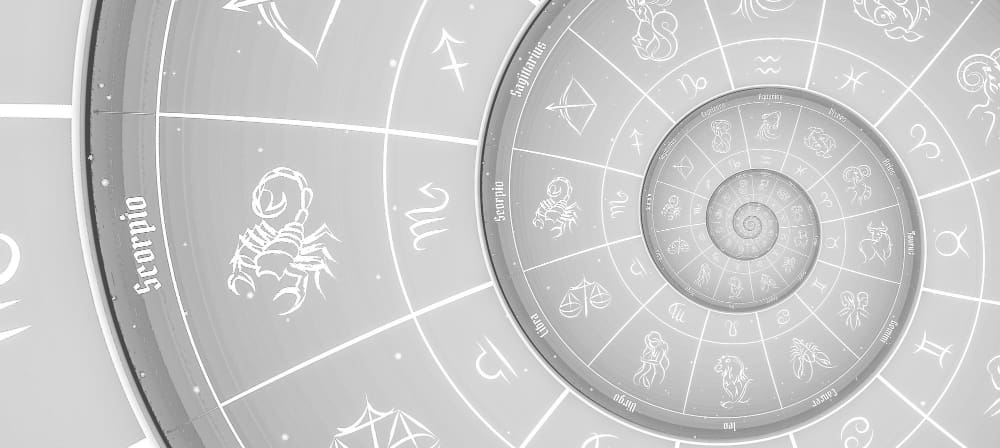A composite chart is a powerful astrological tool that reveals the soul and purpose of a relationship by creating a single, unified horoscope for the partnership itself. Calculated using the mathematical midpoints of the planets and points from two individuals’ birth charts, this “third chart” represents the relationship as a distinct entity, complete with its own personality, strengths, challenges, and ultimate destiny. For anyone seeking to understand the deeper dynamics of a romantic partnership, business collaboration, or even a close friendship, the composite chart offers a unique map of the shared journey, detailing what the two of you are creating together and why you have come into each other’s lives.
The Relationship’s Birth Chart
Think of your personal birth chart as a celestial snapshot of the sky at the moment you were born; it’s your unique cosmic DNA. A composite chart operates on a similar principle, but instead of capturing the birth of a person, it captures the birth of a relationship. It treats the connection between two people as a living, breathing third entity that exists independently of the two individuals who comprise it.
This chart isn’t about how one person feels about the other on an individual level. Instead, it describes the shared energetic field you co-create. It answers questions like: What is the fundamental purpose of this union? What is our shared mission? How do we function as a team? How does the world perceive us as a couple?
By studying the composite chart, we can see the relationship’s core identity (the composite Sun), its emotional needs (the composite Moon), and its primary mode of communication (the composite Mercury). It provides a profound look into the very fabric of the connection, moving beyond individual chemistry to the relationship’s overarching story.
How a Composite Chart is Calculated
The creation of a composite chart is a fascinating exercise in celestial mathematics. The technique involves finding the precise midpoint between the same planets in two different birth charts. An astrologer takes Person A’s Sun and Person B’s Sun and finds the exact halfway point between them along the 360-degree zodiacal wheel. This new point becomes the composite Sun.
For example, if Person A’s Sun is at 15 degrees of Aries and Person B’s Sun is at 15 degrees of Gemini, the midpoint would be 15 degrees of Taurus. This process is repeated for the Moon, Mercury, Venus, Mars, and all other planets and significant points (like the Ascendant and Midheaven) to construct an entirely new chart.
This method results in a complete horoscope with twelve houses, planets distributed throughout, and a unique set of aspects between them. This new chart doesn’t describe either person individually; it describes the entity they form together. It is the energetic average, the alchemical fusion of two separate horoscopes into one.
Composite vs. Synastry: A Crucial Distinction
In relationship astrology, it is vital to distinguish between a composite chart and a synastry chart, as they reveal different layers of a connection. Many people confuse the two, but they serve distinct and complementary purposes.
Synastry: The Chemistry Between Two People
Synastry is the art of comparing two individual birth charts. It involves laying one chart on top of the other to see how the planets from one chart interact with the planets and points in the other. A synastry reading focuses on the aspects between the charts—for example, how your Venus connects with your partner’s Mars, or how their Moon aligns with your Sun.
Synastry reveals the interpersonal dynamics, the initial attraction, and the day-to-day energetic exchange. It is the chart of “you and me.” It answers questions like: “How do I affect you?” and “What is the chemistry between us?” It highlights areas of natural harmony and potential friction between two distinct personalities.
Composite: The Shared Path of the Relationship
The composite chart, on the other hand, is not about the interplay between two separate individuals. It is the chart of “us.” It reveals the nature and purpose of the relationship as a singular entity. It doesn’t focus on how your planets affect your partner’s; it describes the self-contained world the two of you build together.
An easy analogy is to think of two musicians. Synastry would describe how the sound of the violinist harmonizes with the sound of the pianist. The composite chart, however, describes the song they create together—its melody, rhythm, emotional tone, and structure.
A relationship can have challenging synastry (interpersonal friction) but a beautiful composite chart (a strong shared purpose), or vice-versa. Both tools are essential for a complete picture.
Interpreting the Key Components of a Composite Chart
Reading a composite chart involves analyzing its planets, houses, and aspects, much like a natal chart. However, the interpretation is always focused on the relationship entity, not the individuals.
The Composite Sun: The Relationship’s Core Purpose
The composite Sun represents the heart, life force, and fundamental identity of the relationship. Its zodiac sign and house placement reveal the primary reason the partnership exists. A composite Sun in Libra, for example, suggests a relationship built on partnership, balance, and social grace. If that Sun is in the 10th house of career, it might be a public-facing couple or a business partnership.
The Composite Moon: The Emotional Life of the Union
The composite Moon governs the emotional foundation of the relationship. It describes the couple’s shared habits, domestic life, and how they instinctively nurture one another. A composite Moon in Cancer points to a deeply nurturing, private, and family-oriented bond. A composite Moon in Aquarius might indicate a more detached, friendship-based emotional connection that values freedom.
The Composite Ascendant: The Couple’s Public Persona
The composite Ascendant, or Rising Sign, is the “front door” of the relationship. It describes how the couple presents itself to the outside world and the first impression they make as a unit. A couple with a Leo Ascendant may appear glamorous, dramatic, and confident, while a Virgo Ascendant couple might seem more reserved, practical, and service-oriented.
The Inner Planets: Communication, Love, and Action
- Composite Mercury: This defines the communication style of the partnership. It shows how the couple exchanges ideas, makes plans, and resolves disagreements.
- Composite Venus: This planet reveals how the relationship expresses love, affection, and what it values. It also points to the couple’s social life and shared pleasures.
- Composite Mars: This represents the relationship’s energy, drive, and passion. It shows what the couple actively pursues together and also where potential conflicts and arguments may arise.
The Houses: Where the Action Happens
The house placement of the composite planets is critical. The houses show where the relationship’s energy will manifest in life. A strong emphasis on the 4th house suggests a relationship focused on home and family. Planets in the 5th house point to a bond centered on creativity, children, and romance. A 7th house stellium (a cluster of planets) places an immense focus on the theme of partnership itself, often indicating a union that feels destined and all-encompassing.
The Aspects: Internal Harmony and Tension
Just like in a birth chart, the aspects between composite planets reveal the internal dynamics of the relationship. Harmonious aspects like trines and sextiles show areas of natural ease and flow. Challenging aspects like squares and oppositions represent the inherent tensions and growth points for the relationship. For instance, a square between the composite Sun and composite Saturn suggests the relationship will face significant tests of commitment and responsibility, which, if overcome, can forge an unbreakable bond.
A Tool for Deeper Understanding
The composite chart is an invaluable resource for any relationship, whether romantic, familial, or professional. It provides a roadmap that helps partners navigate their shared path with greater awareness. It shifts the perspective from blame or individual shortcomings to a collective understanding of “this is what we are working with.”
By understanding the composite chart, a couple can lean into their shared strengths and consciously work on their inherent challenges. It objectifies the relationship’s dynamics, allowing for more productive conversations and a deeper appreciation for the unique entity they are building together.
Ultimately, the composite chart is a testament to the idea that when two people come together, something new is created—a third consciousness with its own lessons to learn and its own purpose to fulfill. It is a powerful reminder that every relationship has its own unique destiny written in the stars.








